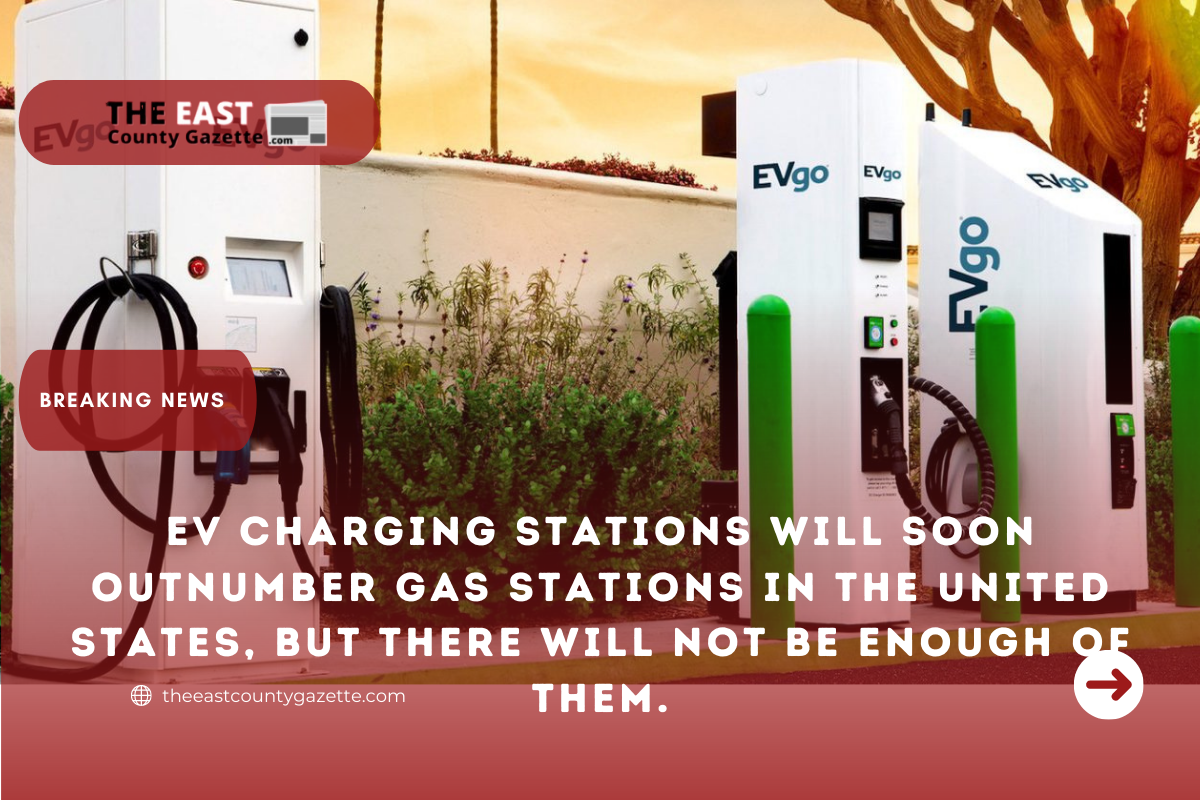In the United States, there will be approximately 108,000 public charging ports by 2021. That’s nearly one charging port for every gas station in the United States, where there are an estimated 111,000 to 150,000 of them – a significant increase in EV charging ports is required.
Over 2 million electric vehicles (EVs) are currently registered in the United States. According to a United States Department of Energy report, the ideal ratio of electric vehicles to charging stations is 40 Level 2 charging ports and 3.4 DC fast chargers (DCFC) per 1,000 electric vehicles.

(A DCFC charger, for example, typically has three ports.) Currently, there are 41 Level 2 charging ports and 5.7 DCFC charging ports per 1,000 electric vehicles (EVs), which equates to approximately 21 EVs per charging port.
While there are 2,514 gasoline vehicles per gasoline station, the ratio is acceptable because internal combustion engine vehicles currently have a greater range than electric vehicles.
Read More: Latest Study Suggests Coronavirus May Mutate in Hiv-positive Individuals.
However, the range of electric vehicles is rapidly increasing. EV models like the Tesla Model S can travel as far as 405 miles on a single charge, and Mercedes unveiled the Vision EQXX concept car at the Consumer Electronics Show earlier this year, which has a range of 648 miles on a single charge, according to the car insurance comparison website Jerry, for example. Lucid’s Air is capable of traveling more than 500 miles on a single charge.
With an estimated 35 million electric vehicles (EVs) on the road by 2030, new research from Jerry estimates that the United States will need to install approximately 478 charging ports every day for the next eight years in order to build the necessary infrastructure to support them.
Even though 90 percent or more of electric vehicle owners charge their vehicles at home, more public charging stations are still needed for city and apartment/condo dwellers, as well as for long trips that exceed the range of the vehicle’s battery.
The following is an explanation provided to Electrek by Lakshmi Iyengar, data scientist at Jerry, on why they compared charging ports to gas stations rather than pumps:
In addition to the federal push for EV chargers – the Biden Infrastructure Law targets 500,000 stations by 2030 – there is also a push on the corporate side to increase the number of charging stations available to employees and customers.
In this way, the number of EV charging ports will surpass that of gas stations, which has been steadily decreasing for the past 20 years.
Example: EOS Linx, which provides solar-powered stations with electric vehicle chargers, today announced a collaboration with Choice Hotels International, one of the world’s largest hotel chains with more than 6,000 franchised hotels in the United States under the brands EconoLodge and Quality Inn, to install EOS Charge Stations at a number of their locations.
During the first quarter of this year, the first set of EOS Charge Stations will be installed at select hotels in Atlanta, Chattanooga, and Nashville, with the second set to follow later in the year. EOS Linx offers a variety of Level 2 chargers and fast chargers with varying capabilities, all of which are compliant with the universal J1772 charging standard.
Furthermore, the convenience store chain 7-Eleven has committed to installing 500 DCFC charging ports by the end of 2022, as part of its commitment to sustainability. At the moment, it only has 22 charging stations spread across 14 stores in four different states.

